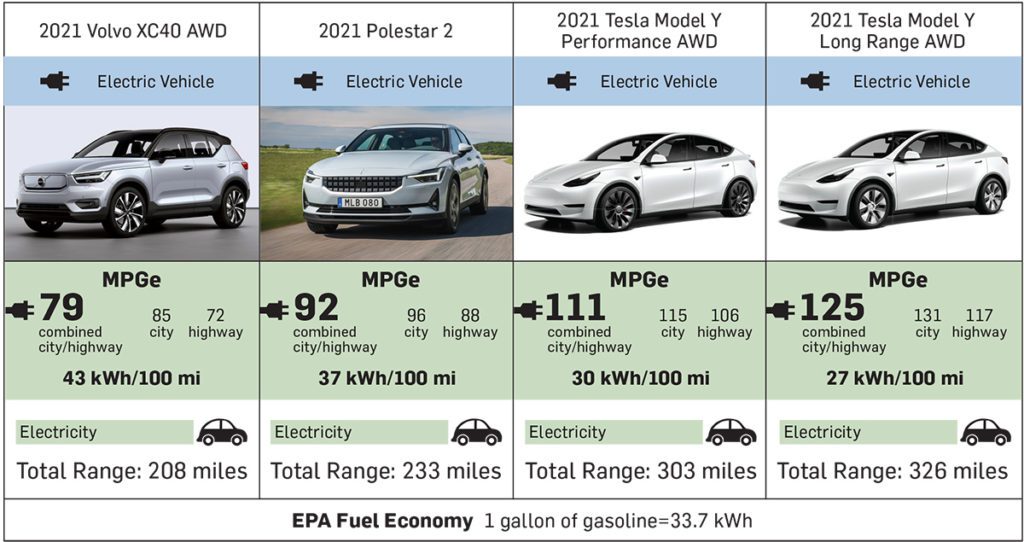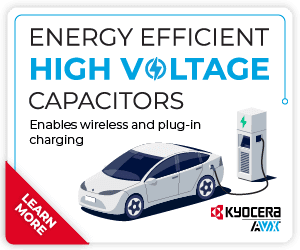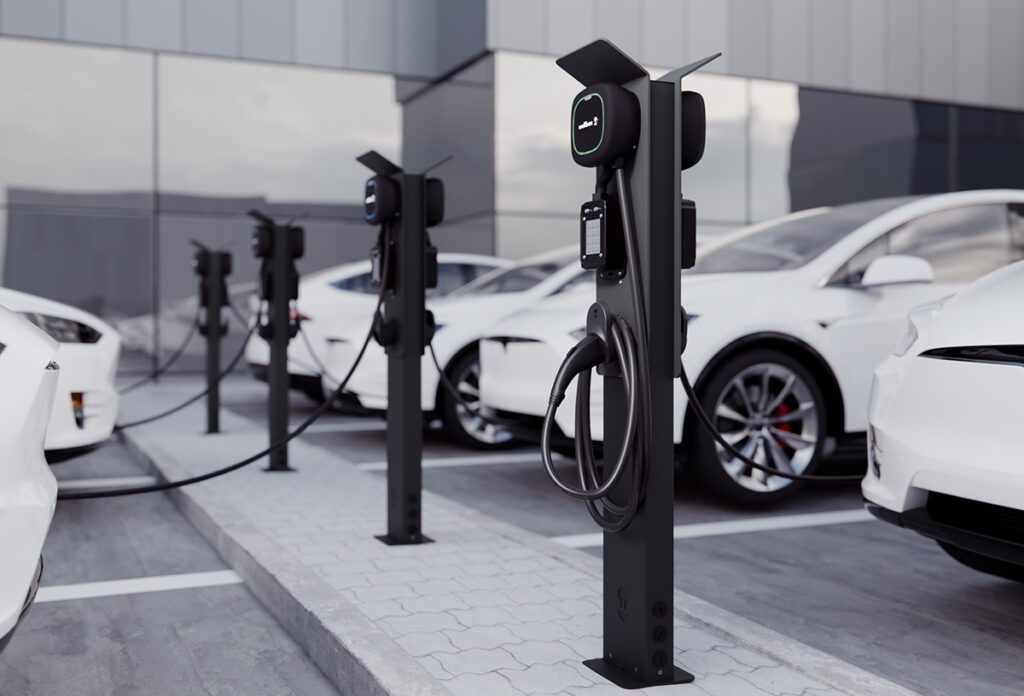You might not know it to look at them, but these two cars—one Swedish, one Chinese—share underpinnings and a parent company.
Volvo and its Chinese parent Geely are very serious about selling cars that plug in. Starting in 2016, the Swedish brand has included plug-in hybrid versions of pretty much every new vehicle it sells in the US.
In 2019, Volvo launched the XC40 compact crossover, a boxy but stylish compact SUV with a 2.0-liter 4-cylinder engine and optional all-wheel drive. Until now, it’s had no plug-in option.
Volvo’s first EV
Late last year, Volvo launched its very first all-electric model in North America. It’s called the XC40 Recharge, and the earliest versions aren’t cheap, priced from about $55,000 including delivery. The launch model, with a 78 kWh battery pack and two motors providing all-wheel drive, is the high end of a range that will eventually include less expensive models with only front-wheel-drive and/or a lower-capacity battery, at prices in the low 40s.
The XC40 Recharge has considerably more horsepower and torque than its gasoline-powered AWD counterpart: 300 kilowatts (402 hp) and 486 lb-ft versus 248 hp and 258 lb-ft. Where it falls down is its EPA-rated range: a mere 208 miles. That’s less than any other EV calling itself a “crossover” or “utility vehicle,” from the Chevy Bolt EV and its soon-to-arrive Bolt EUV “utility” sibling to any version of the Tesla Model Y.
A pre-production XC40 Recharge I drove for an hour last October through rolling suburban hills outside New York City drew little attention, perhaps due to its muted, elegant silvery-green color and black roof. Its blanked-off grille was barely noticeable.
On the road, Volvo’s first EV is comfortable, quick, and eminently practical, with a large load bay.
On the road, Volvo’s first EV is comfortable, quick, and eminently practical, with a large load bay. The company notes that it has the same 57.5 cubic feet of cargo space as the gasoline XC40s, though its towing capacity falls from 3,500 to 2,000 pounds. That’s partly due to the weight; the electric XC40 is a whopping 900 pounds heavier than the AWD gasoline version.
My quick road test revealed both pros and cons of the XC40 Recharge.
On the plus side, the tall hatchback/crossover shape gives good headroom and sufficient cargo volume. The grey interior fabric, textured very much like felt, felt fresh and distinctive, and its mock-suede seat inserts added a touch of elegance.
Like a Tesla, the electric Volvo doesn’t need a button or key to start. It senses the fob, and it powers up when the driver sits down. On the road, it offers strong, predictable regenerative braking—with a very slight initial lag—right down to a stop.
Android above all else
Best of all, Volvo has handed over its dashboard and infotainment software to Android Auto. This isn’t the connection utility that lets you run some phone apps through the car’s screen; Android software actually powers the interfaces for phone, navigation, and other functions—including truly excellent voice recognition. It always worked, it understood what I said the first time, and it was far quicker to respond than cloud-based voice recognition systems in other luxury brands. Every carmaker should do this immediately. Seriously.
Android running the dashboard means Google Assistant, Google Maps, Google Play Store, and more, are instantly available and work the way you already use them. Maps will calculate whether you can reach a destination on your battery range, and route you through appropriate charging stations if not. If you choose, you can leave your phone out of the loop altogether. “Hey, Google” is deeply ingrained in a lot of users by now, and Android finally makes voice commands practical in a car from a major maker.
On the minus side, the XC40’s distinctive, thick, blocky rear pillar produces gigantic blind spots in the rear quarter and leaves over-the-shoulder views out nonexistent. We’d have liked knobs for climate control rather than having to use the central screen—we ended up using Android voice, but not every buyer will want to do that.
On the road—disappointing for a $50K-plus EV in 2021—the XC40 Recharge proved inefficient. We logged energy consumption at 41 kWh per 100 miles. That wouldn’t provide even 200 miles of range. The low-profile, low-rolling-resistance tires were also noisy on coarse pavement.
Overall, we liked the looks and packaging of the XC40 Recharge. Volvo’s marketing stresses “designed for the city” and “engineered for urban driving,” and it would likely be a good choice for urban dwellers with easy overnight access to Level 2 charging. We didn’t test its claimed ability to charge at up to 150 kW to 80 percent of capacity. The practicality of longer road trips will depend on the evolution of reliable high-speed CCS charging networks—currently a very mixed bag.
We found the electric Volvo’s range and efficiency disappointing for a car in roughly the same price category as the Tesla Model Y, which offers rated ranges of more than 300 miles, not to mention the added benefit of a reliable, ubiquitous, friction-free Supercharger network to boot.
Overall conclusion: A good first effort, more work needed.

Introducing Polestar
The Volvo XC40 Recharge isn’t the only battery-electric vehicle from Volvo/Geely to go on sale in the US. The Chinese company has launched a brand-new brand called Polestar, which will be built around all-electric vehicles and sustainability. It’s “not a traditional car brand,” according to executives, and will offer a new type of premium experience.
The Chinese company has launched a brand-new brand called Polestar, which will be built around all-electric vehicles and sustainability.
Polestar debuted with a limited-production, very expensive plug-in hybrid coupe called the Polestar 1. But its first volume entry, the Polestar 2, is now also being delivered to buyers in the handful of urban areas most amenable to a new brand selling only cars with plugs. Those are Los Angeles, New York City and the San Francisco Bay Area.
The Polestar 2’s design language has some unique elements and some Volvo echoes. Polestar execs offered mixed messages about that—in a virtual press briefing, the head of design said everything was unique to the brand, as visualized in the Polestar Precept concept car shown at the Geneva Motor Show. But a different exec at our test drive suggested that the car offers elements of Volvo design too. Its “Thor’s Hammer” headlights, for instance, were pioneered by Volvo. Think of the two brands as cousins, perhaps.
The Polestar 2 is built on the same underpinnings as the XC40 Recharge, with a 78 kWh battery and front and rear motors providing 408 hp total power and 487 lb-ft of torque. While it too is a five-door hatchback, it’s much lower than the Volvo, and clearly reads as a passenger car rather than a utility vehicle. Lower frontal area and a sleeker shape boost its EPA range rating to 233 miles, better than the XC40 Recharge but still far below the 315 or 353 miles of a Tesla Model 3 sedan that’s roughly the same size.
While the Polestar 2 shares running gear with the XC40 Recharge, the two vehicles are very different—and meant to appeal to quite different users.
But while the Polestar 2 shares running gear with the XC40 Recharge, the two vehicles are very different—and meant to appeal to quite different users. The brand offers an “alternative” to Tesla, say executives, which doesn’t seem to be the case for Volvo. Contrasting the two, Volvo is “warm and welcoming,” with “natural and humanistic” materials and style, but Polestar is “pure and minimalistic” with design that indicates it’s “high-tech and exclusive.” And so forth.
The exterior and interior color palettes consist largely of tones of white, silver, grey and black. Materials include a variety of woven and textured fabrics. Vegan options are available as well. The overall impression we took away was of riding in a very expensive, very high-tech automotive running shoe.
That’s not a bad thing, and Polestar clearly feels it has identified a market who seeks that. They are likely a good deal younger, and perhaps rather more Chinese, than I am. If the two cars had identical range, I’d take the Volvo—but your mileage may vary.
We spent a full day last August driving a pair of Polestar 2s outside New York City, including a trip to the Hudson Valley’s Bear Mountain State Park. With a lower stance and 50 pounds less weight, the Polestar felt lither and slightly faster than the Volvo. It was enjoyable to toss around the country roads, and overall, it made a good first impression.
Its 20-inch wheels look great but give a harsher ride than the 19-inch alternatives, as always. The Performance Pack adds not only shock absorbers that can be adjusted to vary the ride stiffness, but also striking Brembo disc brakes—though with regenerative braking providing most of the deceleration, they’re arguably overkill. Like its cousin, the Polestar 2 will also have less expensive versions coming, with one motor and/or a smaller battery—the launch model starts at $59,900.
Polestar itself is in the process of setting up its company stores, a process obviously affected by the global COVID pandemic now entering its second year. Anecdotal reports from early shoppers have indicated some trouble in committing to delivery times, perhaps not surprising for a car shipped all the way from Luqiao, China.
Setting up company stores is one kind of challenge for Polestar, but Volvo faces different challenges in launching its first electric car into a showroom full of gasoline models. A few anecdotal reports from Volvo shoppers suggest that salespeople who sell predominantly gasoline cars may not yet be up to speed—or much interested—in selling a pricey electric model. The electric XC40 comes from Ghent, Belgium, incidentally.
Polestar is an entirely new and separate brand from Volvo. Under current rules, that means up to 200,000 Polestar vehicles will be eligible for the full $7,500 federal income-tax credit.
It’s worth noting that Polestar is an entirely new and separate brand from Volvo, despite the name’s origin as a performance sub-brand for the Swedish make. Under current rules, that means up to 200,000 Polestar vehicles will be eligible for the full $7,500 federal income-tax credit for buying an EV. Volvo still has plenty of its own credits left, but after several years of selling plug-in hybrids, it has fewer than its sister brand.
High ambitions for low CO2
And selling a lot of EVs is key to Volvo’s business plan. Last fall, a company executive said Volvo plans to sell CO2 credits to its rivals as its hybrid sales soar. By the end of 2020, the Swedish brand expected one out of every five cars it sold globally to be a plug-in hybrid—though “less in the States.”
More surprising, the company said it expects fully half the company’s sales to be all-electric vehicles by 2025. That’s highly unlikely in North America, but it suggests Volvo sales will continue to grow in China, which is using a variety of carrots and sticks to boost sales of cars that plug in, the majority of them battery-electric rather than plug-in hybrid.
In their first iterations, neither the Volvo XC40 Recharge nor the Polestar 2 has impressive or even competitive range—if the competition for tech-forward buyers is Tesla, anyhow. On the other hand, both cars have Android Auto in the dash, which proved to be a much more compelling feature than I’d expected.
We can expect to hear much more about Volvo’s EV plans, and see a lot more fully electric models, over the next five years. Its second electric car will break cover this March. While US sales of its first EV may not be terribly high, it may not need them to be. But for a small company, Volvo is being aggressive about the transition to electric—which matches its conscientious, sensible Swedish brand persona.
It’s now been 10 years since Geely bought Volvo and funded a complete renewal of its range—one that has led to shared technologies with the Chinese brand’s own cars, and now the launch of the new Polestar lineup as well. The cost of getting national recognition for a new car brand has been estimated at $100 million a year for 10 years. Whether Geely will put the funds into getting Polestar recognized nationwide remains to be seen.
But both brands clearly bear watching as they roll out more electric cars. Watch this space.
This article appeared in Charged Issue 53 – January/February 2021 – Subscribe now.


































































































